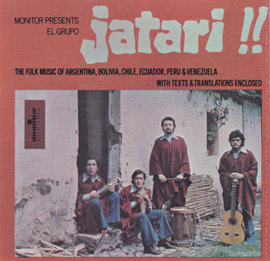La Sardina de Naiguatá on the Burial of the Sardine [Interview Video]
Smithsonian Folkways will release ¡Parranda! Venezuelan Carnival Music by the group La Sardina de Naiguatá (The Sardine of Naiguatá) on June 19. The collection, part of the Tradiciones/Traditions series, is the definitive statement from this pioneering 13-piece band led by visionary Ricardo Díaz. Formed over fifty years ago during the ritual Burial of the Sardine, members of the group discuss the importance of this celebration.
Venezuela's Caribbean coastal town of Naiguatá is home to one of that country's most celebrated Carnival musical traditions. In the 1970s, Díaz augmented the local legacy of Afro-Caribbean drumming traditions with brass, electric bass, keyboard, and women's chorus to create La Sardina de Naiguatá, the musical group that drives the town's annual cycle of public celebrations, including Carnival, Corpus Christi, and St. John the Baptist. ¡Parranda! brings us the contemporary, joyous sounds of the pre-Christian rite of "burying the sardine" to promote an abundant harvest of fish and crops.
Naiguatá, ciudad costera caribeña de Venezuela, es el lugar de origen de una de las más celebradas tradiciones musicales del país, carnaval. En los 1970s, el trompetista Ricardo Díaz añadió al legado local de tradiciones de tamboreo afro caribeñas instrumentos de metal, bajo eléctrico, teclado, y coro de mujeres para crear La Sardina de Naiguatá, el grupo musical que alegra el ciclo local de celebraciones públicas como carnaval, Corpus Christi, y San Juan Bautista. ¡Parranda! nos trae los sonidos contemporáneos del rito precristiano de “enterrar a la sardina” para promover una cosecha abundante de pescado y agricultura.






